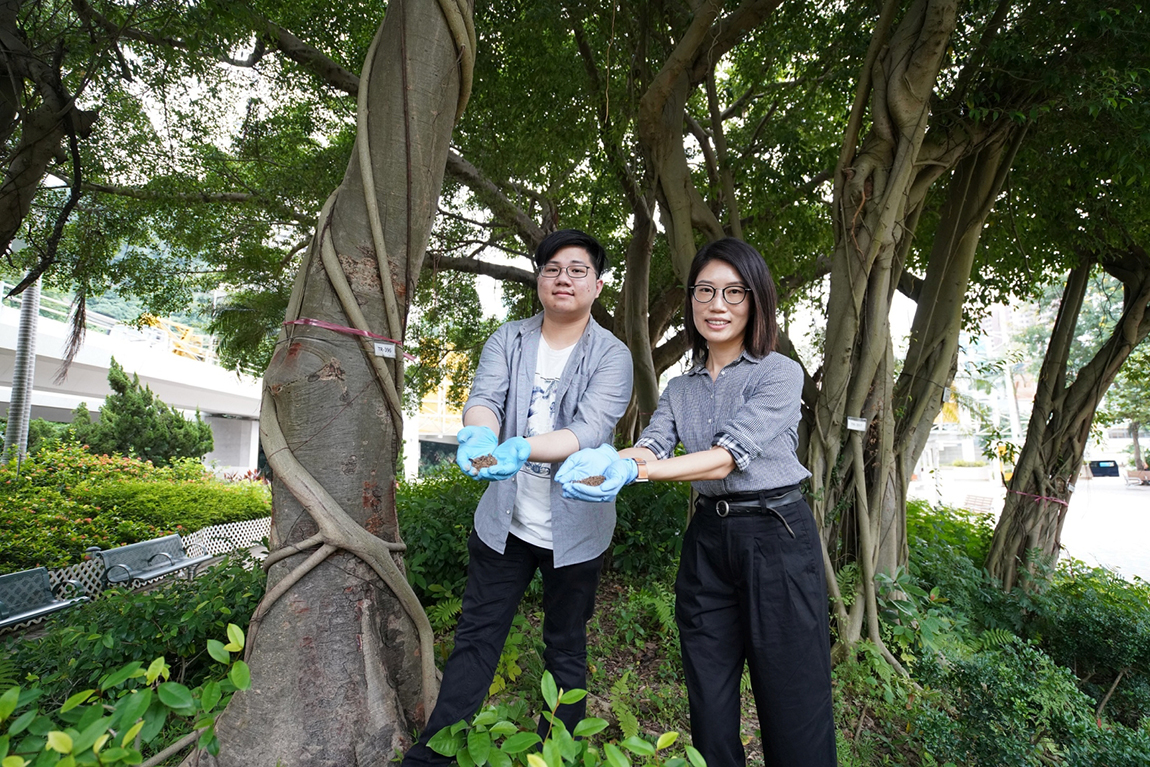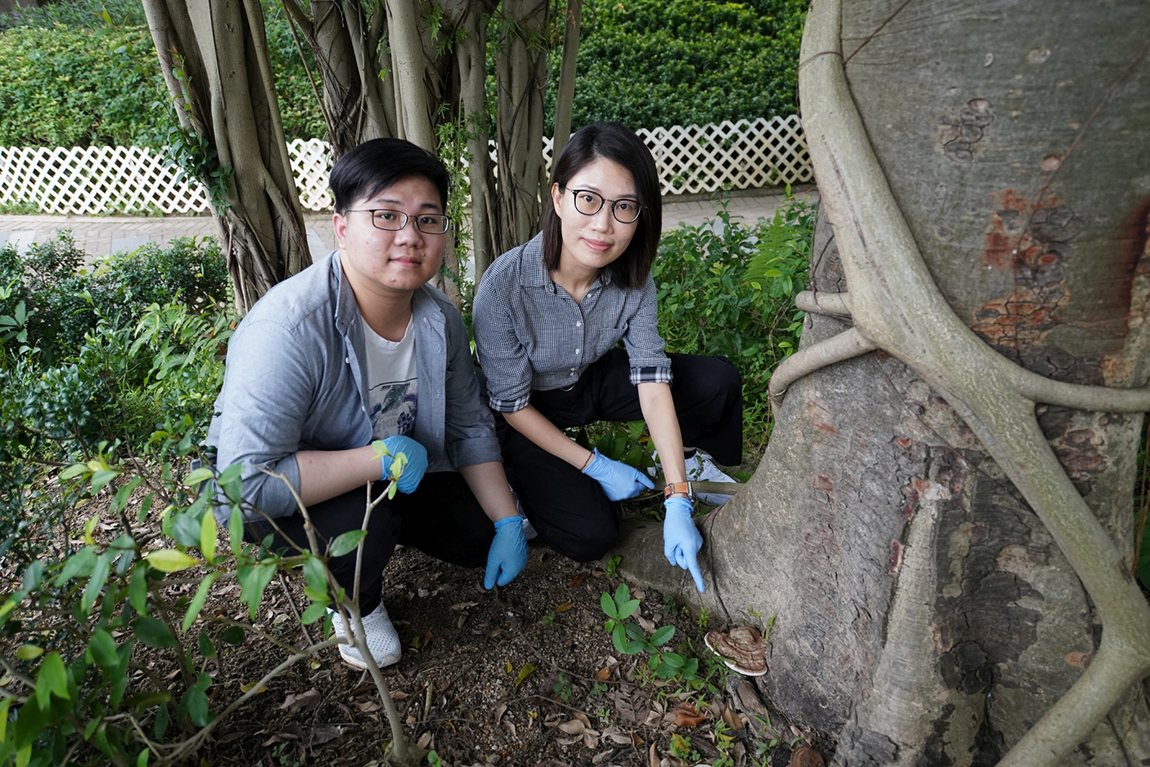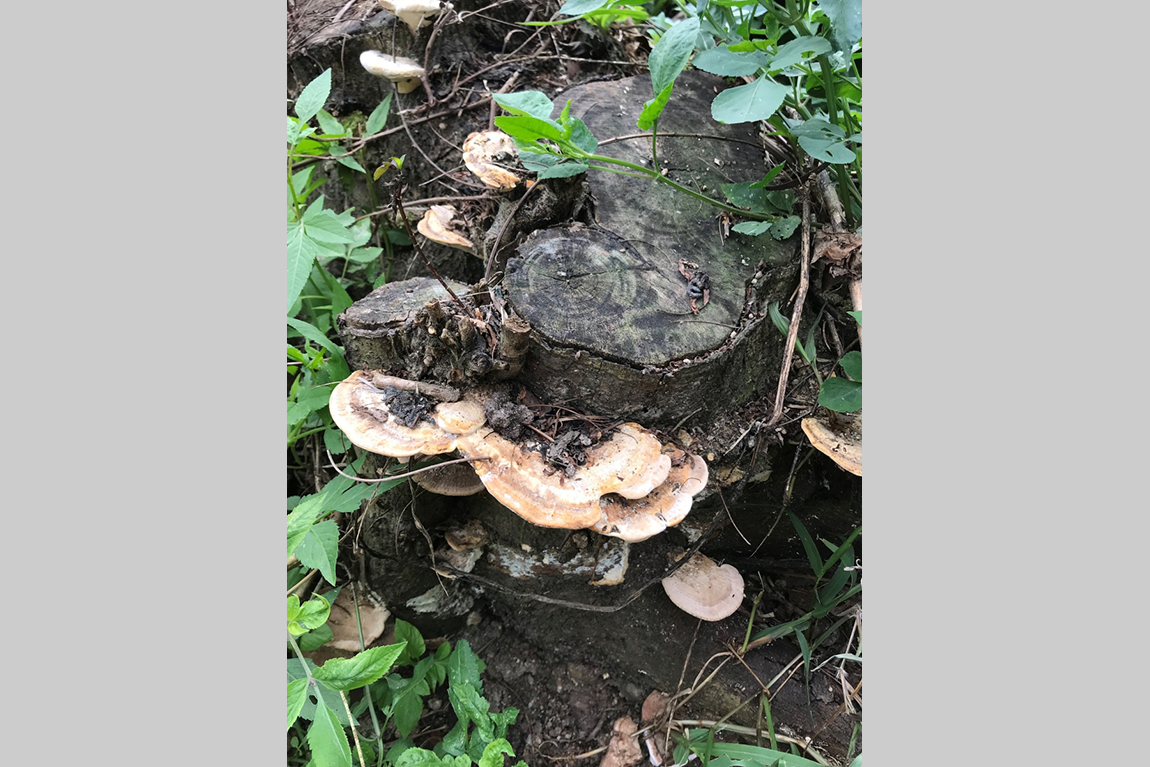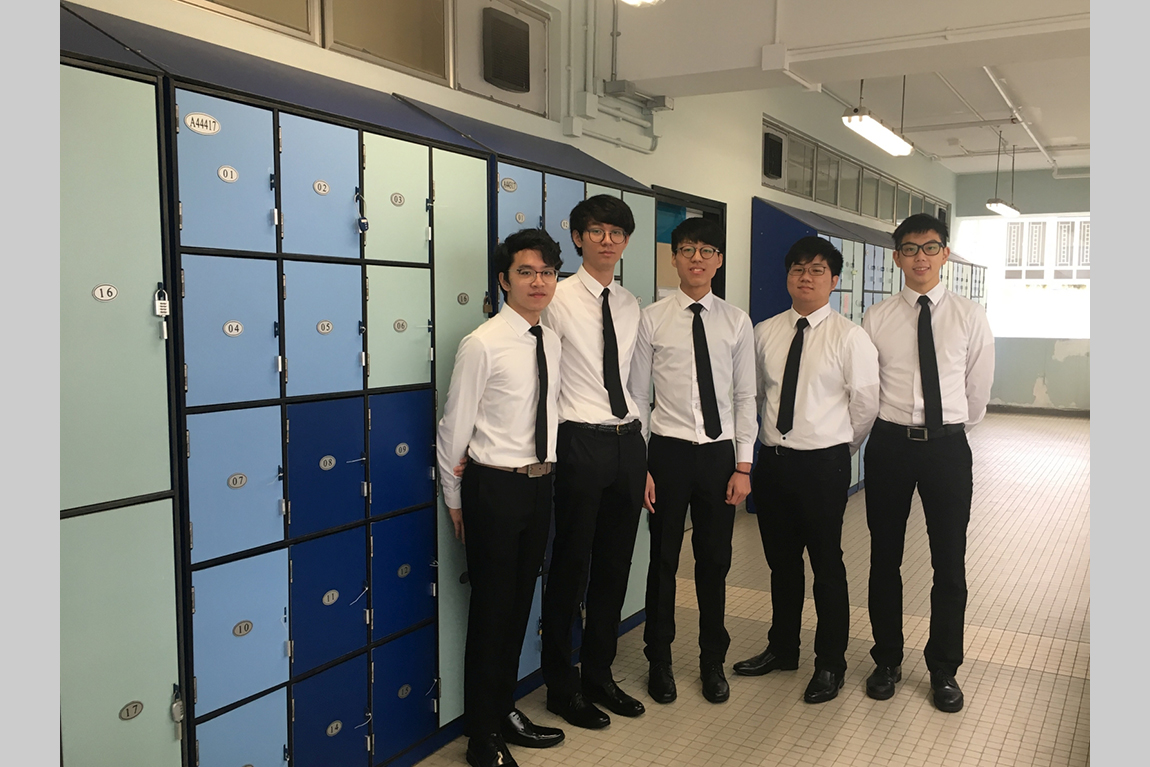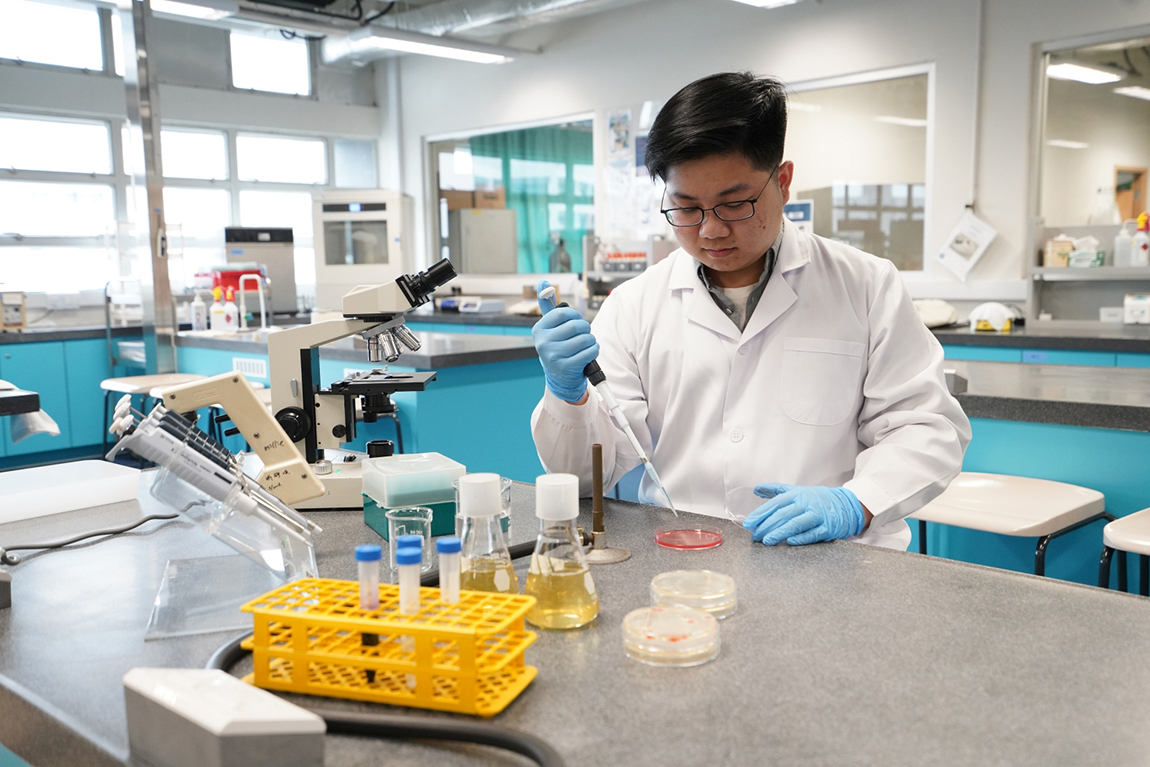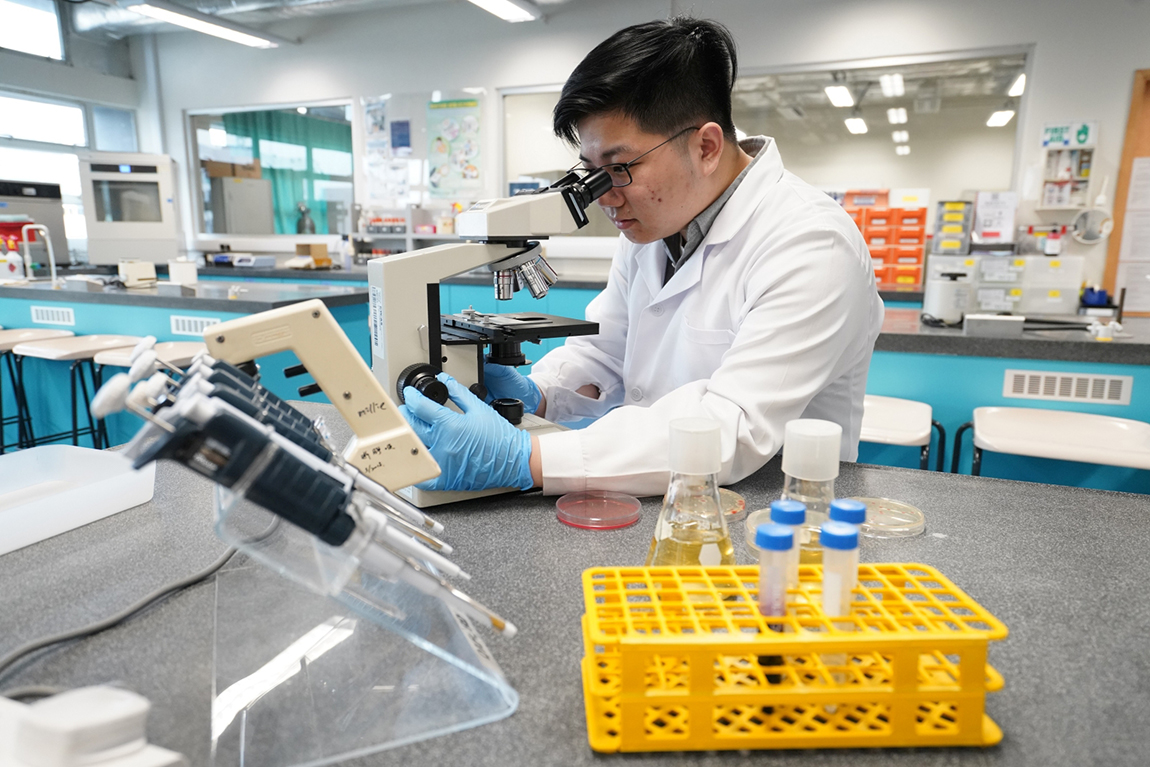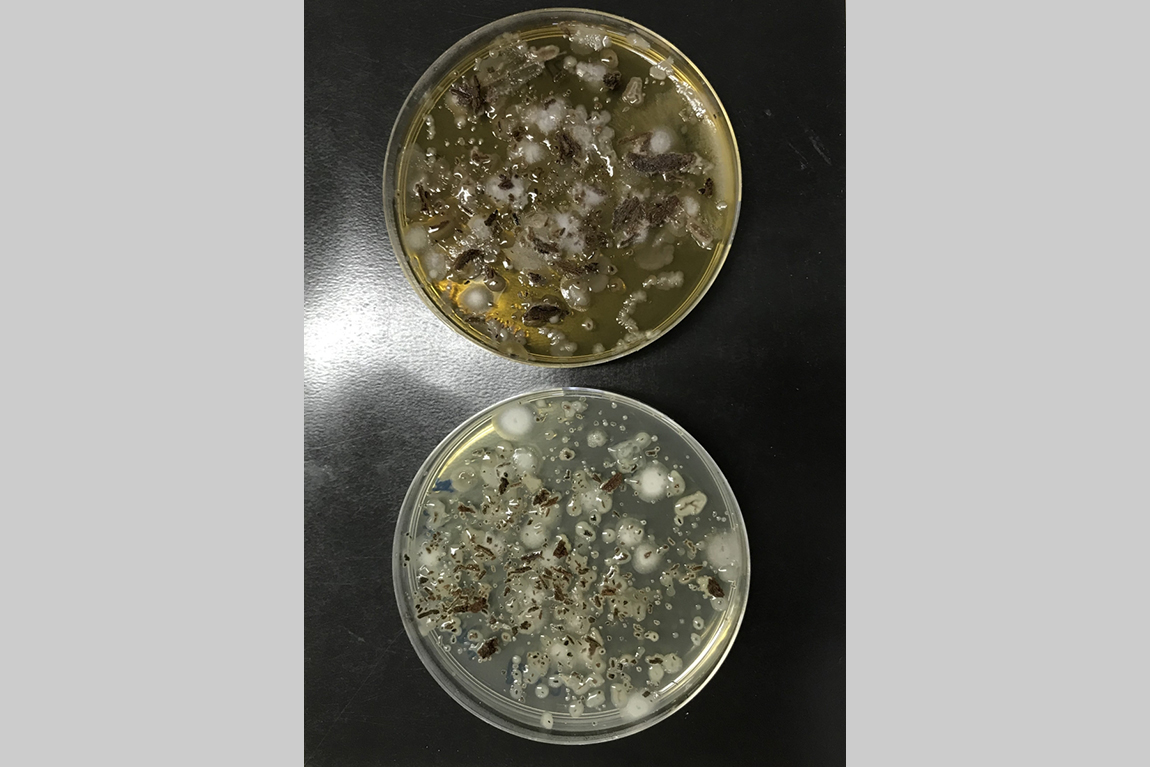Soil DNA testing on tree fungi developed by IVE graduates helps track down the culprit in tree falling in advance
-
Buffeted by Tropical Storm Nangka earlier, Hong Kong may still have to brace for another storm next month, as forecasted by the Hong Kong Observatory. Flooding apart, hurricanes also induce incidents like tree falling. When trees are infected with pathogenic fungi, they are prone to rot and become brittle, and thus susceptible to strong winds. They may eventually fall and cause accidents. Five plant science enthusiasts, all graduates of the Higher Diploma in Biotechnology programme with the Hong Kong Institute of Vocational Education (IVE), utilised biotechnology to track down the “culprit” in tree falling. They fine-tuned the present fast-track DNA (deoxyribonucleic acid) testing methodology for ascertaining the types of pathogenic fungi that infect trees. Their test helps to detect and prevent fungi at an early stage, so that timely diagnosis and cure of the infected trees become possible. Earlier, the project received the Outstanding Prize at the Innovation x Application Scheme run by the Vocational Training Council (VTC).
It is necessary to identify the specific types of fungi that infect a tree in order to prescribe a correct treatment. At present, an arborist resorts to eyeballing for differentiation. Or they turn in the fruiting bodies of the fungi and their spores to a laboratory for testing. Traditional differentiation methods, like relying on the naked eye to tell the difference, are imprecise. Too late, it is when the fungus has developed into a fruiting body over time that the real problem can be easily identified. By then, the best curative time has passed.
To identify the real type of fungi by extracting the fungi DNA from soil
CHOW Chun-kit, IVE graduate of the Higher Diploma in Biotechnology programme, explained the research objective, “As some of the high-risk pathogenic fungi have already caused certain harm to the structure of a tree before they develop into fruiting bodies, we need to ascertain their types as early as possible. Thus, we tried the soil testing methodology to extract the fungi DNA from the soil for early detection of the fungi type.” He partnered with four other schoolmates, AU Ka-kit, CHING Ho-tin, LAM Yat-wa and HO Yiu-chung, to undertake the research project when he was studying at IVE. Chun-kit pointed out that after the team had extracted the fungi DNA from soil specimens, they copied and tested the DNA sequences of the fungi in soil by means of molecular biology techniques, and then mapped them onto the sequences found in the genomic database. Then, they analysed the fungi types in soil.Undaunted by repeated setbacks and having experimented over 500 times within half a year
AU Ka-kit, another team member, said they encountered numerous problems in their research. For instance, the soil contains various chemicals that will impede molecular diagnosis. So, the team pored over reams of literature and discovered that when a “gold nanoparticle” was added in the course of copying the DNA, sensitivity would be raised by tenfold. This way, the problem of yielding false negative test results because of impurities found in soil can be resolved. The success rate of sequencing rose by 30% subsequently. HO Yiu-chung, yet another team member, remarked, “The biggest challenge was to calibrate the precise amount and concentration of the ‘gold nanoparticle’ in the testing processes. We spent nearly half a year and conducted over 500 tests using different soil specimens before we could ensure the precision of the test results.”Tracking down culpable pathogenic fungi leading to tree decay
The testing method researched by the team can accurately identify both the fungi commonly found in soil and some fungi types that may cause tree decay, including Trametes cubensis and Ganoderma gibbosum. Esther LO Ting-sze, teacher-in-charge of the research project and Senior Lecturer of the Department of Applied Science, IVE (Chai Wan), noted that the method of identifying tree fungi in soil is relatively uncommon in the industry. The department will continue to refine the methodology and raise its sensitivity in the hope of popularising it among the arboriculture and testing sectors.Currently studying a bachelor’s degree programme in natural sciences with a local university, Chun-kit said he put to use what he has learnt in IVE on the project: “Like molecular biology, microbiology and cell culture; whenever we came across problems, we consulted related dossiers as well as arborists and campus instructors.” Further, an internship with the National Cancer Centre Singapore was arranged for him during his IVE years. He gained much practical experiences with the Centre. In the future, he aspires to continuing research studies in plant science and contribute his part to society.










